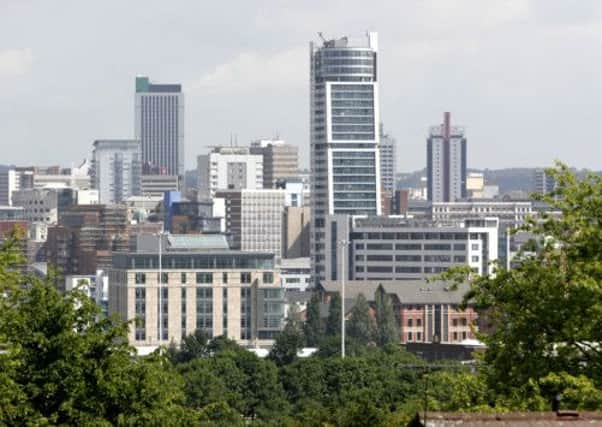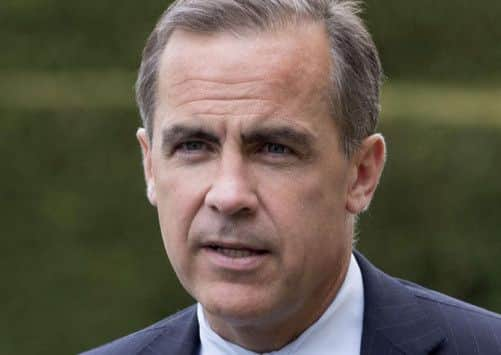Home truth on prices hard to find but don’t confuse Yorkshire with London


Bombarded with house price indices from portals, banks and analysts, it’s little wonder that confusion reigns about how fast property prices are rising.
Figures vary wildly but some of the more startling statistics have led to fears of a price bubble.
Advertisement
Hide AdAdvertisement
Hide AdBusiness Secretary Vince Cable is among doom-mongers predicting another boom and bust scenario, though he may be comforted by the latest figures from the Office for National Statistics. They show that house prices have soared to record levels with values now 0.8 per cent higher than they were before their previous peak in January 2008. The annual rate of increase in the UK was 3.3 per cent in July.


But take the red hot London market out of the equation and the figures tell a very different story. The capital has seen an influx of super-rich buyers and a chronic lack of supply, so prices there have soared by 9.7 per cent. The rest of the UK has seen a 1.3 per cent rise. In Yorkshire it was 0.5 per cent, while Wales, Scotland, the North East and North West all saw price falls.
Scott Corfe, managing economist at the Centre for Economics and Business Research, says the ONS figures make it clear that any talk of a bubble is a purely London-centric view.
Yet fears persist thanks to the success of the Government-backed schemes aimed at kick-starting the housing market. They include the Help to Buy scheme, which offers shared equity deals on newly-built homes, and Funding for Lending, which has enabled banks to ease their stranglehold on mortgages and loans for development.
Advertisement
Hide AdAdvertisement
Hide AdThe Council for Mortgage Lenders says the schemes are having a positive effect. Lending to first-time buyers in July was up 48 per cent compared with a year ago. The number of mortgages approved that month was 60,624, up from just 26,000 in November 2008 but nowhere near the height of the boom in 2007 when over 100,000 were handed out.
Critics say January could be the tipping point for prices to spiral out of control. That’s when the Mortgage Guarantee scheme launches, allowing those with smaller deposits to buy a new or second-hand home worth up to £600,000 with the help of a government guarantee on the mortgage.
Vince Cable says the ensuing rush to buy will lead to an “old-fashioned property boom”.
Kevin Hollinrake, MD of York-based estate agency chain Hunters, disagrees. “The funny thing is we’ve only just come out of one crisis and we’re already worried about the next one. There might be a spike in buying when the Mortgage Guarantee scheme launches but I don’t think there’s anything to worry about as long as we keep lending at the right level and we build enough houses. It would be good to see councils being pro-active in allowing the expansion of cities and the creation of new towns and villages.”
Advertisement
Hide AdAdvertisement
Hide AdHe believes prices have already risen by five per cent in Yorkshire over the spring and summer, which is far higher than any of the indices indicate, but he doesn’t think growth will reach double-digit figures.
“The market has been very busy this year. Last week in the York office every single house we sold went to best and final offers. That’s because there is a lot of pent-up demand out there. There are three million moves that weren’t made during the recession.
“Even so, I think we’ll stick at the five per cent increase in prices this year and we may see a slightly bigger increase next year when the new scheme comes into effect, then five per cent the year after. I think everyone will be happy with that. People who own property want prices to rise at a reasonable rate and that includes first-time buyers. If prices fall, it is not helpful to those who have just got on the ladder.”
This view is echoed by Richard Donnell, of property analytics business Hometrack, and by Mark Manning, sales director of Leeds-based estate agency Manning Stainton. Both concur that five per cent, not the 1.3 per cent recorded by the ONS, is a fair assessment of the average Yorkshire price rise over the last 12 months, buoyed by hot spots like York and Harrogate.
Advertisement
Hide AdAdvertisement
Hide AdManning Stainton, which has 17 branches in Leeds and Wakefield, is so confident of a steadily rising but stable market that it has just put an ambitious expansion plan into action by opening a new branch in Harrogate with the promise of more to come.
Mark says: “Prices are improving and I’d say they are up between three and five per cent. We think that this will continue for the next few years and it’s one of the reasons why we think now is a good time to expand the business.
“Activity levels are good and there are a lot of encouraging signs. Our South Leeds office manager reports that first-time buyers are back in the more affordable areas and we haven’t seen that for a long time.
“A bubble is possible but I think the Bank of England will protect us from that.”
Advertisement
Hide AdAdvertisement
Hide AdRichard Donnell, director of research at Hometrack, adds: “London is having a distorting impact on figures but I agree that in Yorkshire prices have probably gone up five per cent this year and maybe 10 or 20 per cent in York and Harrogate. There is no doubt that levels of confidence are improving and prices are rising, though we must remember that prices are coming up from a very low base in the mid to lower end of the market.”
He doesn’t think boom and bust is likely either, especially as interest rates can only go up, which will dampen activity.
“The Bank of England will stamp on any signs of a bubble. That happens in other countries like Hong Kong and New Zealand and I think it will happen here,” says Richard, who worries that a lack of supply could cause price volatility in some areas. He points out that half of all home owners don’t have a mortgage and many of them don’t want to move, while a new report from Home.co.uk says supply is down 19 per cent year on year and the volume of vendors entering the market is less than half of what it was during 2007.
But again, the headline figure hides a North-South divide. In Yorkshire the number of houses on the market is up six per cent since August 2012.
Advertisement
Hide AdAdvertisement
Hide AdBen Pridden, from Savills’ York office, says: “Whilst there is talk of a possible housing bubble nationally, it would seem unlikely at present. Certainly all this seems a long way from Yorkshire, where, with very few exceptions, we are only just at the bottom of the cycle, let alone experiencing runaway growth.
“What is, perhaps, inevitable is that unless more houses are built demand will outstrip supply and then prices really might be pushed upwards at a significant rate.”
Most property professionals agree that we are building an average 150,000 new homes a year when we need 250,000 to meet population needs.
To dampen soaring prices created by factors including supply and demand, the Royal Institution of Chartered Surveyors has proposed a five per cent cap on price rises by limiting lending. The suggestion has been deemed unworkable. Instead, many are putting their faith in the Bank of England governor Mark Carney. Although he has said he will not raise interest rates above 0.5 per cent until unemployment falls to seven per cent, which should be late 2016, he can put pressure on banks to restrict mortgage lending.
Advertisement
Hide AdAdvertisement
Hide Ad“I think he has the power to bring stability to the market,” says Kevin Hollinrake. “My hope is that he will use it.”
Green stalks not green shoots
Property portal Rightmove has raised its forecast for house price inflation to six per cent for this year. Its previous prediction for 2013 was just two per cent growth.
Rightmove says that two weeks ago new sellers began asking higher prices. Supply is also an issue.
The site also says that new seller numbers have fallen by nine per cent over the last month, while traffic has been up 20 per cent compared with a year ago.
Advertisement
Hide AdAdvertisement
Hide AdThe average stock per estate agency branch is now 70, down from 72.
Rightmove director Miles Shipside says: “Sellers have yet to respond en masse to increased demand, they are still cautious. Many require green stalks of recovery rather than just green shoots.”